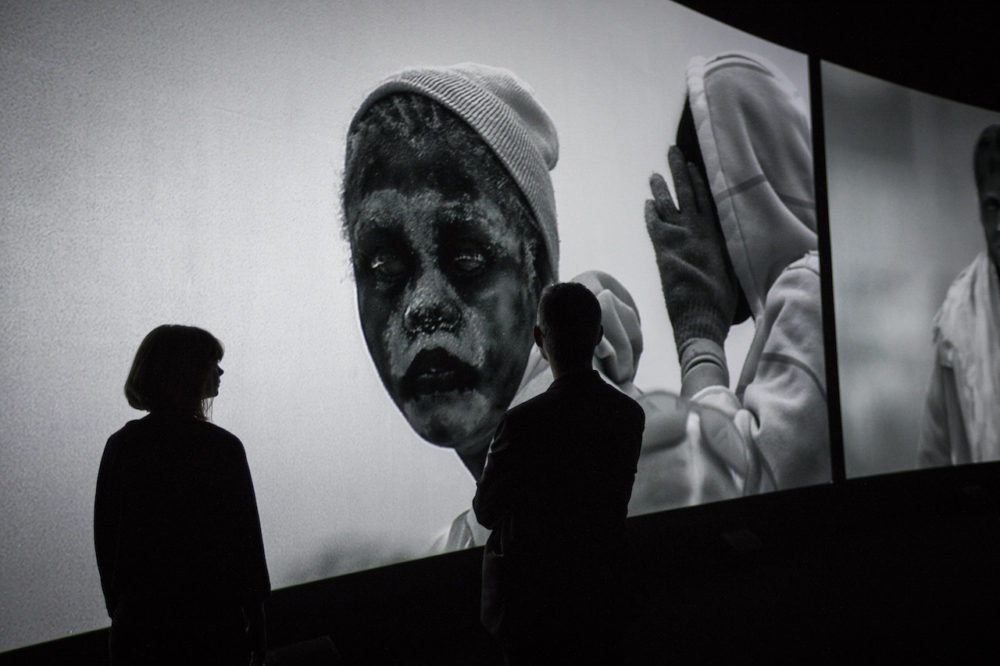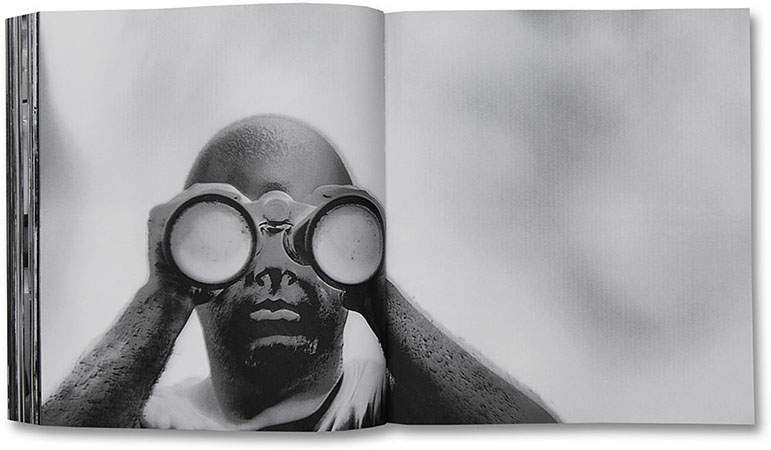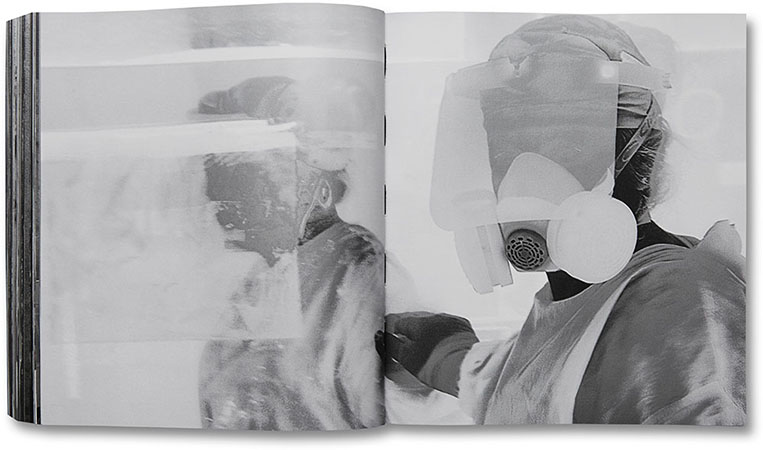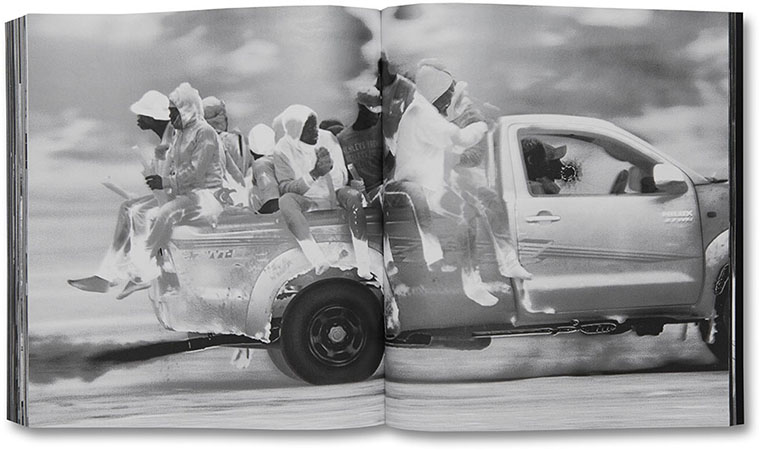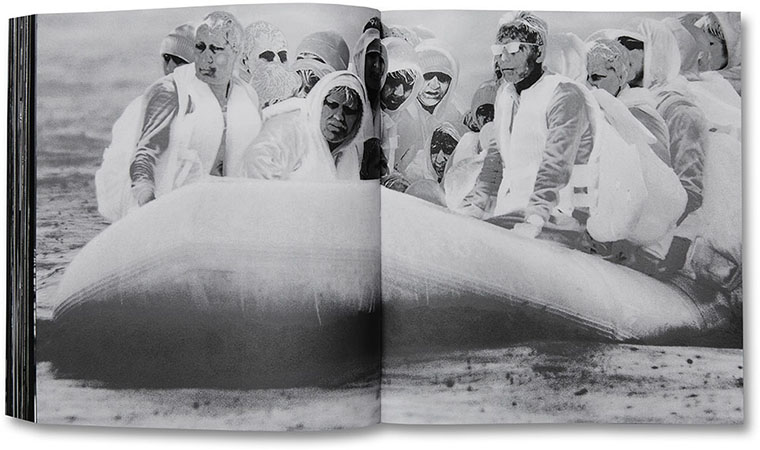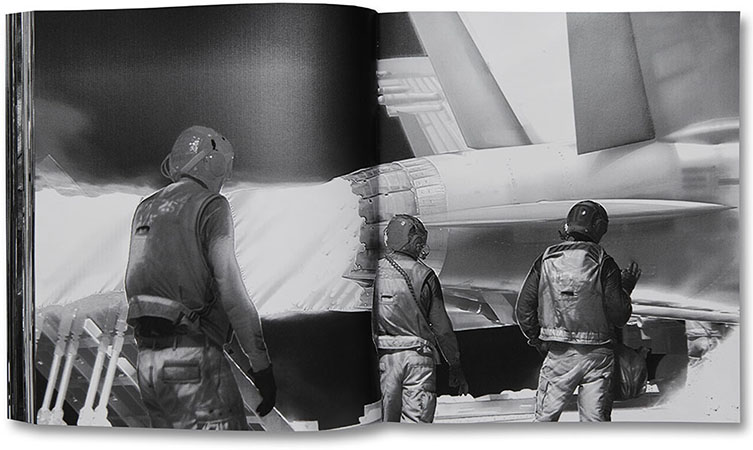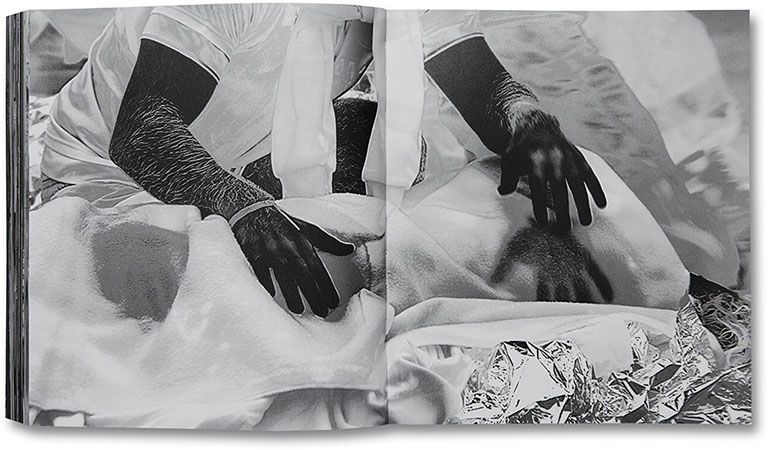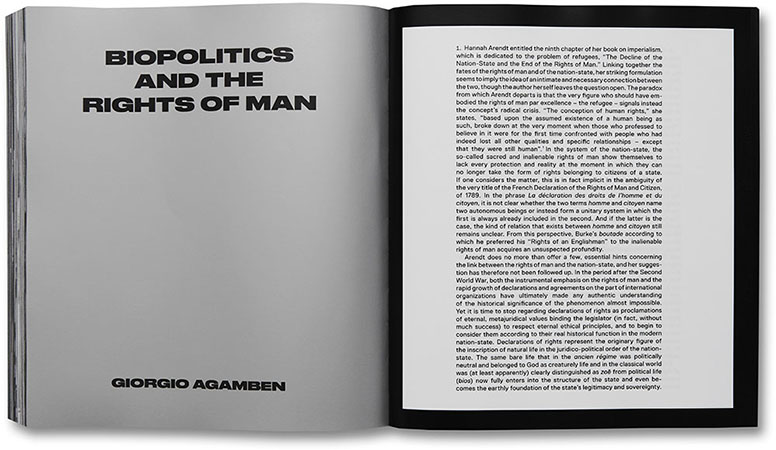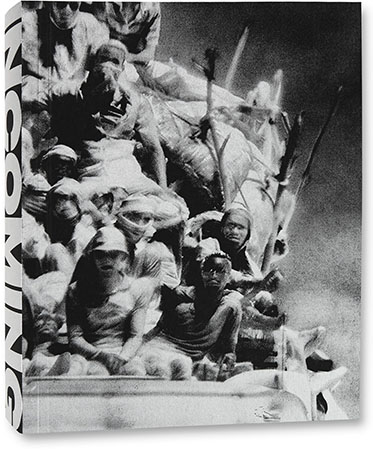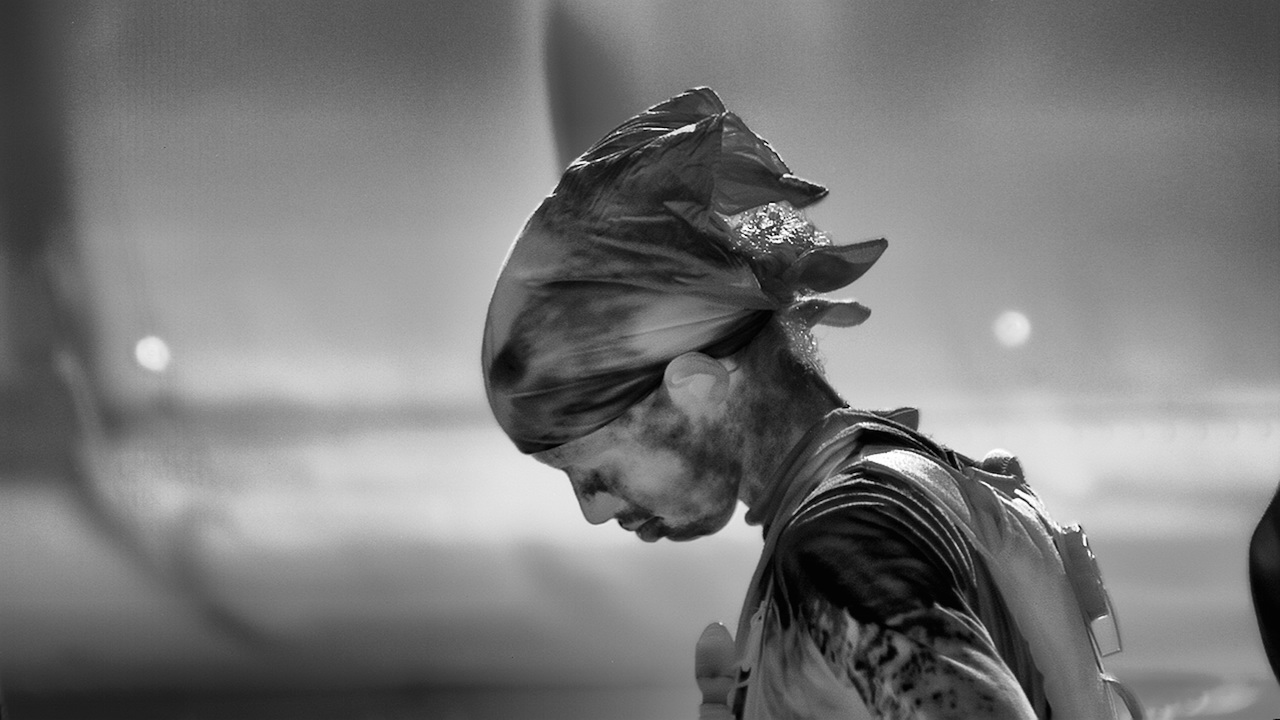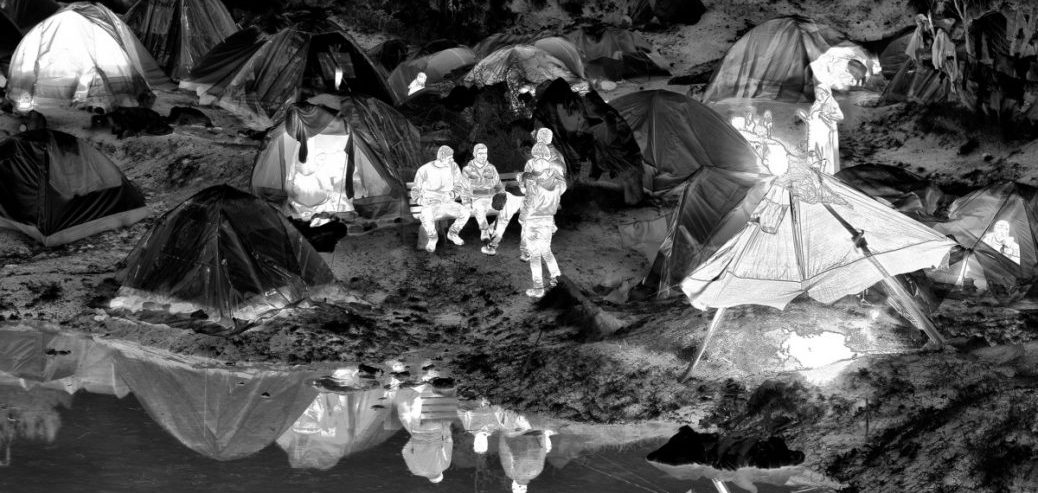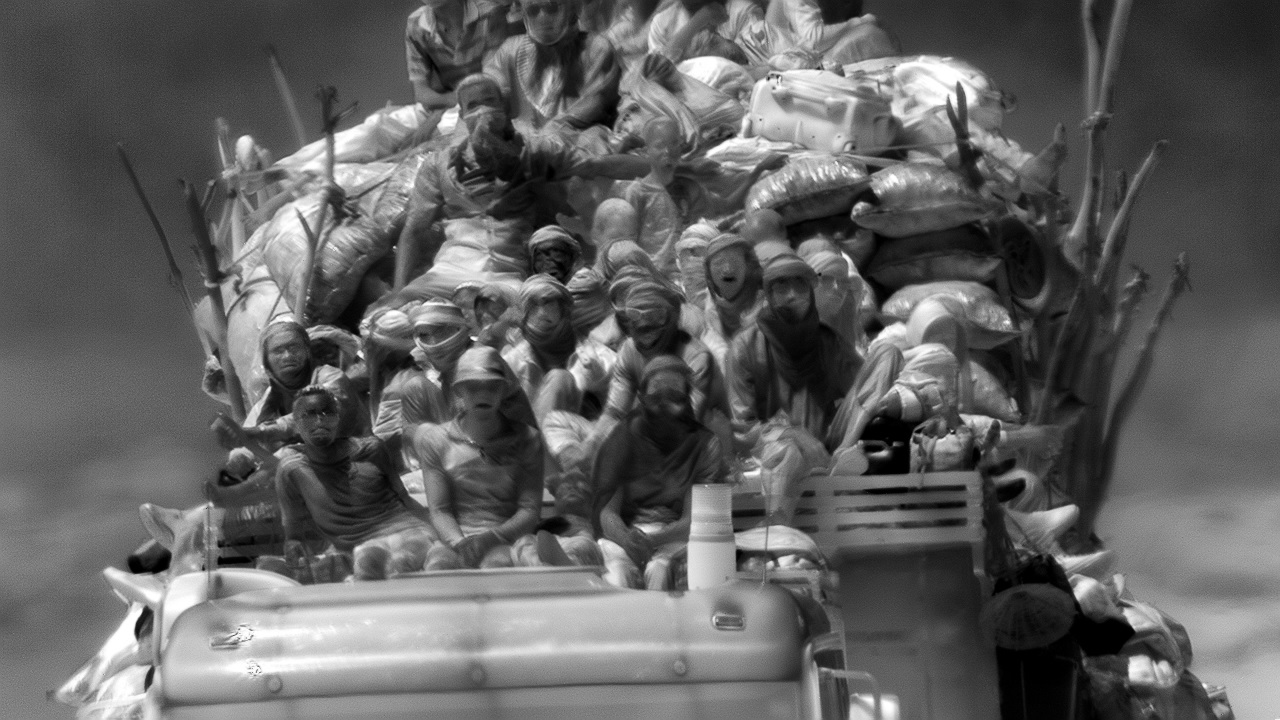“I am European. I am complicit. I wanted to foreground this perspective in a way, to try to see refugees and illegal immigrants as our governments see them. I wanted to enter into that logic in order to create an image that reveals it. So I chose to represent these stories, really a journey or series of journeys, using an ambivalent and perhaps sinister new European weapons camera technology. The camera is intrusive of individual privacy, yet the imagery that this technology produces is so dehumanised – the person literally glows – that the medium anonymizes the subject in ways that are both insidious and humane. Working against the camera’s intended purpose, my collaborators and I listened carefully to the camera, to understand what it wanted to do — and then tried to reconcile that with these harsh, disparate, unpredictable and frequently tragic narratives of migration and displacement”.
Coinciding with Incoming’s exhibition at the Barbican Art Gallery in London Gallery Curves until April 23, 2017, the photographer Richard Mosse, attached to the philosopher Giorgio Agamben, publishes the book that accompanies his latest work. This publication, edited by Mack (London), has the same title of the exhibition and of the film-documentary; is a combination of the video frame with lyrics written by Irish photographer and Italian philosopher.
Richard Mosse, before in the video and now in these 576 pages, registers and documents the crisis of mass movement of refugees and migrants in Europe caused by Syrian conflict, African and Middle Eastern persecution, poverty and climate change.
The fight of refugees and migrants was filmed by the artist, in collaboration with Ben Frost, composer, and Trevor Tweeten, cinematographer, for the video-installation (multiple channel), and recorded through a camera which allows to see at a distance of 30 km, day or night.
This is a surveillance equipment designed by a company that produces weapons, that pushes the International Traffic in Arms Regulations ITAR to classify it as part of an advanced system of registration, while Mosse must apply for a permit from the Department of Foreign Affairs, whenever the door outside Europe, to avoid charges of weapons smuggling. It can be seen a key tool in what Foucault and Agamben have described as bio-power.
This thermographic camera surveillance detects body heat and makes it material. Bodies and human faces appear defaced by sweat and saliva; the camera has made disturbing figures almost inhuman in their struggle for existence. The choice of this particular telephoto is explained by photographer inside the publication, who claims that his intention was to look at the emigrants image through the point of view of our Government and industry of weapons, a look from afar distance, but at the same time invasive and violent.
Shocking images in black and white tone-on-tone are the portrait of the walking dead, spectral figures with incandescent, glowing faces. This eerie vision of fragile bodies, struggling for survival in harsh environments, alludes to mortality, hypothermia, xenophobia and harsh living conditions to which they are ‘stateless people’, according to Giorgio Agamben, thinking about the way our governments observe, represent, and addressing the issue of refugees.
The necessity and urgency of the problem make the book format crucial, enabling a more widely circulation of contents. Richard Mosse within it included the sequential images of the film. Inside it you can see the frames of bombing in Syrian territory, the rescues off the coast of Libya, groups of people walking through the Sahara desert and fires inside the refugee camps.
It may be said, despite the static structure of the book, that the film, the light and colour construction of the picture have enabled the effective vibration and activity within the pages. Therefore, through this important publication, Mosse made available the drama of this humanitarian and political crisis of our time. And Through the registered glacial military filter he emphasizes and highlights this world tragedy, confirming the blurring of his practice borders that stand between journalism, documentarism and conceptualism.
These pictures are documents revealing and showing the architecture of the camp (security gates, speakers, long queues for the food, and temporary shelters), and the awful human presence, inside of unlivable and marginal conditions.
Photographer and filmmaker Richard Mosse was born in 1980 in Ireland and lives in New York. His work focuses on war-torn regions, capturing the effects of conflict on landscapes and people in lush, cinematic images. Mosse situates his practice between documentary journalism and contemporary art practice, explaining that he seeks to represent the unrepresentable in order to “help us begin to describe, and thereby account for, what exists at the limits of human articulation.” The current American-Iraqi war and the ongoing rebel conflict in the Eastern Congo are among the conflicts Mosse has recorded. He is best known for “Infra” (2010-11), a series of luridly colored, large-scale photographs of the fighters, inhabitants, and landscapes of the Eastern Congo. By shooting with Kodak Aerochrome, an infrared surveillance film that renders greens into acid pinks and reds, Mosse offers a searing, psychedelic vision of the warscape and those who suffer within it.
Text by Francesca Zaja
OTA-bound paperback with metallic silkscreen cover image and black painted edges.
Metallic tritone printing throughout.
Texts by Giorgio Agamben and Richard Mosse.
576 pages
280 tritone plates
17.5 cm x 19.7 cm
Publication date: February 2017
Installation shot of Incoming by Richard Mosse in collaboration with Trevor Tweeten and Ben Frost at The Curve, Barbican. Image credit Tristan Fewings.
Still frame from Incoming, 2015-2016 © Richard Mosse.
http://www.richardmosse.com/
http://www.mackbooks.co.uk/
